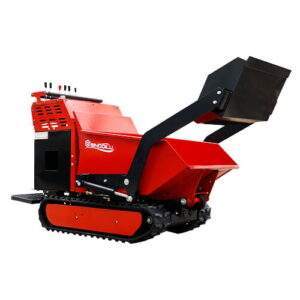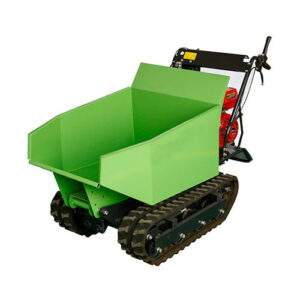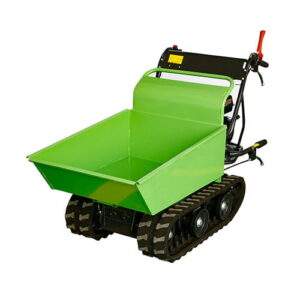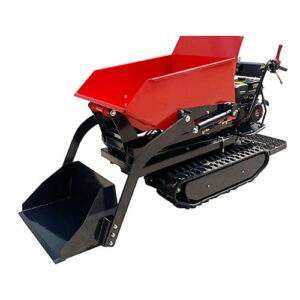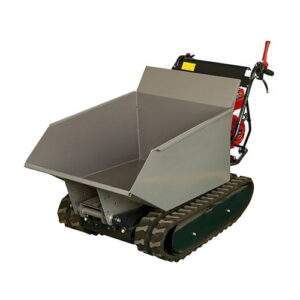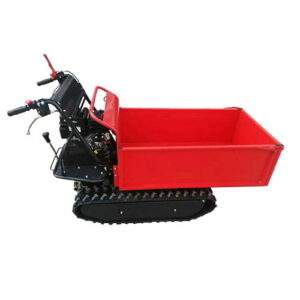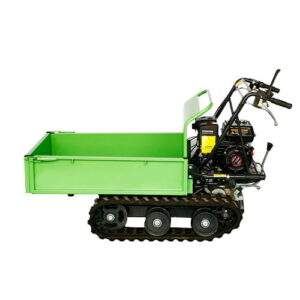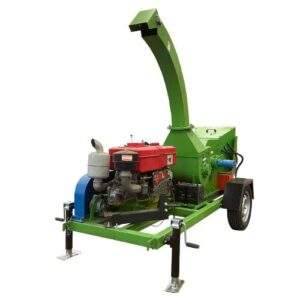Real Dumper Truck Safety Tips for Operators
Introduction
In the world of heavy machinery, the real dumper truck stands as a powerhouse, essential for various construction, mining, and industrial projects. Despite its critical role, operating a real dumper truck comes with significant risks. Safety is paramount, not only for the operator but also for everyone on site. This comprehensive guide delves into real dumper truck safety tips for operators, ensuring a safe and efficient working environment. With keyword optimization, this article aims to provide valuable insights while maintaining a keyword density of at least 2%.
Understanding the Real Dumper Truck
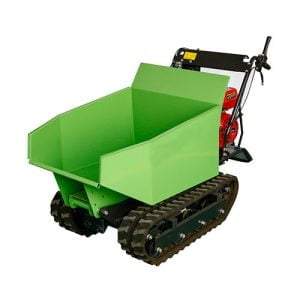
Before diving into safety tips, it’s essential to understand what a real dumper truck is and its typical applications. A real dumper truck, often referred to simply as a dumper or dump truck, is a heavy-duty vehicle designed primarily for the transportation and dumping of bulk materials such as sand, gravel, demolition waste, and other loose materials. These trucks are a staple in construction, mining, and large-scale landscaping projects due to their impressive capacity, durability, and versatility.
Key Features of Real Dumper Trucks
- Heavy-Duty Build: Real dumper trucks are constructed with robust materials to withstand the harsh conditions of construction and mining sites. Their frames are typically made of high-strength steel, and they feature reinforced chassis to handle heavy loads and rough terrain.
- Dumping Mechanism: One of the defining features of a real dumper truck is its ability to lift its bed to unload materials efficiently. This is usually achieved through hydraulic lifts that can tilt the bed, allowing materials to be dumped quickly and safely.
- Large Capacity: These trucks come in various sizes, but they all share a common trait: the ability to carry large quantities of material. Depending on the model and design, a real dumper truck can haul anywhere from a few tons to over 100 tons of material.
- Powerful Engines: To move such large loads, real dumper trucks are equipped with powerful diesel engines that provide the necessary torque and horsepower. These engines are designed for longevity and performance, ensuring that the truck can handle the demands of the job site.
- Off-Road Capabilities: Real dumper trucks are designed to operate on uneven and rough terrain. They typically have large, durable tires with deep treads for enhanced traction, and their suspension systems are built to absorb the shocks and stresses of off-road driving.
Types of Real Dumper Trucks
- Standard Dump Trucks: These are the most common type and are used for general purposes. They have a straightforward design with a rear dumping mechanism.
- Articulated Dump Trucks: These trucks have a hinge between the cab and the dump bed, allowing for greater maneuverability on rough terrain. They are often used in mining and heavy construction sites.
- Transfer Dump Trucks: These trucks have separate trailers that can be filled with material and then transferred to the main truck. They are useful for jobs that require the movement of large amounts of material over long distances.
- Side Dump Trucks: Instead of a rear dumping mechanism, these trucks unload their cargo from the side. This design can be beneficial in certain construction scenarios where space is limited.
- Off-Highway Dump Trucks: These are massive trucks used primarily in mining and quarrying. They are designed to carry extremely heavy loads and are not suitable for public roads due to their size and weight.
Applications of Real Dumper Trucks
- Construction: Real dumper trucks are indispensable in the construction industry for transporting materials like sand, gravel, and concrete to and from construction sites. They are also used for removing debris and demolition waste.
- Mining: In mining operations, these trucks are used to haul ore and other extracted materials from the mining site to processing plants or waste dumps.
- Landscaping: Large-scale landscaping projects often require the movement of vast quantities of soil, rocks, and other materials. Real dumper trucks make this process efficient and manageable.
- Infrastructure Development: These trucks play a critical role in infrastructure projects such as road construction, where they transport asphalt, fill materials, and other construction necessities.
Importance of Real Dumper Truck Safety
Safety is a critical aspect when dealing with real dumper trucks. The sheer size and weight of these vehicles mean that any mishap can lead to severe injuries or fatalities. Proper training, adherence to safety protocols, and regular maintenance can prevent accidents and ensure smooth operations.
Preventing Accidents and Injuries
The primary reason for emphasizing safety in the operation of real dumper trucks is to prevent accidents and injuries. Due to their massive size and heavy loads, even minor errors can result in catastrophic outcomes. For instance, an overloaded dumper truck may become unstable, leading to tipping or rollover accidents. Ensuring that operators are well-trained and aware of load limits can significantly reduce such risks.
Protecting the Operator and Site Personnel
The safety of the dumper truck operator and other site personnel is paramount. The operator is constantly exposed to potential hazards, including mechanical failures, collisions, and the risks associated with loading and unloading materials. Implementing strict safety protocols, such as wearing personal protective equipment (PPE), conducting regular safety drills, and maintaining clear communication, can protect everyone on the job site.
Minimizing Equipment Damage
Adhering to safety measures not only protects human lives but also helps in minimizing equipment damage. Real dumper trucks are substantial investments, and any damage can result in costly repairs and downtime. Regular maintenance checks, proper handling, and adherence to operational guidelines ensure the longevity of the equipment, thereby protecting the investment.
Enhancing Operational Efficiency
Safety and efficiency go hand in hand. When safety protocols are strictly followed, the likelihood of accidents decreases, leading to smoother and uninterrupted operations. Efficient operation means projects can be completed on time, within budget, and without the added costs of dealing with accidents or equipment failure. This directly impacts the overall productivity and profitability of a project.
Legal and Regulatory Compliance
Operating real dumper trucks comes with a set of legal and regulatory requirements designed to ensure safety. Compliance with these regulations is not optional; failure to do so can result in hefty fines, legal action, and even the shutdown of operations. Regulations may include mandatory training for operators, regular safety inspections, and adherence to environmental guidelines. Staying compliant not only avoids legal issues but also reinforces a culture of safety within the organization.
Reducing Environmental Impact
Safety in real dumper truck operations also extends to environmental protection. Proper maintenance and handling of these trucks prevent issues such as fuel spills, emissions, and improper disposal of waste materials. An environmentally conscious approach ensures that operations do not negatively impact the surrounding ecosystem, aligning with broader sustainability goals.
Building a Safety Culture
Emphasizing the importance of safety in the operation of real dumper trucks helps in building a robust safety culture within the organization. This culture promotes continuous improvement, where safety is viewed as everyone’s responsibility. Regular training sessions, safety audits, and open communication channels encourage employees to prioritize safety, report hazards, and suggest improvements. A strong safety culture not only protects workers but also enhances the reputation of the company as a responsible and reliable entity.
Financial Benefits
While the primary focus of safety is to protect lives and equipment, there are significant financial benefits as well. Preventing accidents reduces the costs associated with medical treatment, legal liabilities, and compensation claims. Furthermore, maintaining a good safety record can lower insurance premiums and attract more business opportunities, as clients and partners prefer to work with companies known for their commitment to safety.
Psychological Well-being of Employees
A safe working environment contributes to the psychological well-being of employees. Knowing that their safety is a top priority, workers can perform their duties with confidence and peace of mind. This reduces stress, increases job satisfaction, and can lead to higher retention rates, creating a more stable and motivated workforce.
Essential Real Dumper Truck Safety Tips
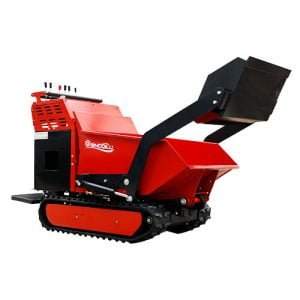
Pre-Operation Inspections
Before starting the real dumper truck, conduct thorough pre-operation inspections. Check for any visible damage, tire pressure, fluid levels, and ensure all safety features are functioning correctly.
Understanding Load Limits
Overloading a real dumper truck can lead to tipping and loss of control. Always adhere to the manufacturer’s specified load limits. This ensures the truck’s stability and prevents undue stress on the vehicle’s components.
Proper Loading Techniques
Proper loading techniques are crucial. Ensure the load is evenly distributed and secured. Uneven loads can shift during transit, causing the truck to become unstable.
Safe Driving Practices
Operate the real dumper truck with caution. Maintain a safe speed, especially when navigating turns or uneven terrain. Avoid sudden stops and starts, and always stay alert to your surroundings.
Regular Maintenance
Regular maintenance of the real dumper truck is vital for safety and longevity. Keep up with scheduled services and promptly address any mechanical issues.
Safety Protocols for Different Scenarios
On-Site Operations
When operating a real dumper truck on-site, be mindful of other workers and machinery. Use designated routes and adhere to site-specific safety guidelines.
Highway Transport
Transporting a real dumper truck on highways requires extra caution. Ensure the truck is roadworthy and complies with all traffic regulations. Use appropriate signaling and maintain a safe distance from other vehicles.
Dumping Operations
During dumping operations, ensure the area is clear of personnel and obstacles. Lower the load slowly and steadily to prevent tipping.
Table: Real Dumper Truck Safety Checklist
| Safety Aspect | Checklist Item |
|---|---|
| Pre-Operation Inspection | Check tires, fluids, brakes, lights |
| Load Management | Adhere to load limits, secure load |
| Driving Practices | Maintain safe speed, use signals |
| Maintenance | Regular servicing, address issues promptly |
| On-Site Safety | Follow designated routes, be aware of others |
| Dumping Safety | Ensure clear area, steady load lowering |
Training and Certification
Proper training and certification are essential for operating a real dumper truck. Operators should undergo rigorous training to understand the machinery, safety protocols, and emergency procedures. Certification ensures that the operator is qualified and competent.
Technological Advancements in Real Dumper Truck Safety
With advancements in technology, real dumper trucks are becoming safer. Features like automated controls, GPS tracking, and collision avoidance systems are now standard in many models. These technologies enhance safety by providing real-time data and alerts to the operator.
Common Mistakes and How to Avoid Them
Overloading
One of the most common mistakes is overloading the real dumper truck. Always follow the manufacturer’s guidelines to avoid tipping and mechanical failures.
Neglecting Maintenance
Skipping regular maintenance can lead to unexpected breakdowns and accidents. Keep a maintenance log and adhere to the recommended service schedule.
Ignoring Safety Protocols
Ignoring safety protocols can have dire consequences. Always follow established procedures and guidelines to ensure safety.
Real-Life Case Studies
Case Study 1: Overloading Incident
In 2018, a construction site experienced a severe accident due to overloading a real dumper truck. The truck tipped over, causing injuries to the operator and nearby workers. This incident highlights the importance of adhering to load limits.
Case Study 2: Maintenance Neglect
A mining company faced significant downtime and repair costs due to neglecting regular maintenance on their fleet of real dumper trucks. The mechanical failure could have been prevented with proper upkeep.
Conclusion
Safety is non-negotiable when it comes to operating a real dumper truck. By following these safety tips, conducting regular maintenance, and staying updated with technological advancements, operators can ensure a safe and efficient working environment. Remember, the key to preventing accidents is vigilance and adherence to safety protocols.
FAQs
Q: What is the most common cause of real dumper truck accidents?
A: Overloading and operator error are the most common causes of real dumper truck accidents.
Q: How often should a real dumper truck undergo maintenance?
A: Maintenance schedules vary, but generally, a real dumper truck should undergo maintenance every 200-500 operating hours or as recommended by the manufacturer.
Q: Are there any certifications required to operate a real dumper truck?
A: Yes, operators must undergo specific training and obtain certification to operate a real dumper truck safely.
Q: What safety features should I look for in a real dumper truck?
A: Look for features like collision avoidance systems, GPS tracking, automated controls, and robust safety harnesses.
Q: How can technology improve real dumper truck safety?
A: Technological advancements like real-time data monitoring, automated controls, and collision avoidance systems can significantly enhance real dumper truck safety.

